Fengbin Zhang
Deep Dual Support Vector Data Description for Anomaly Detection on Attributed Networks
Sep 01, 2021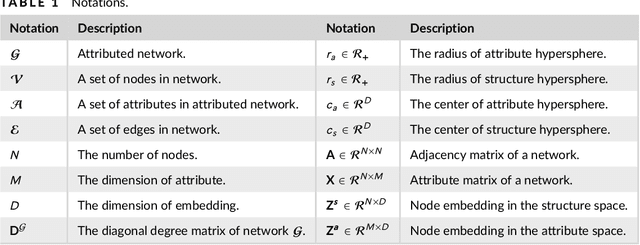
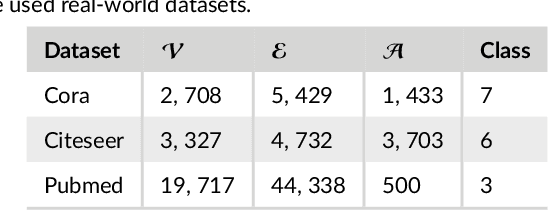
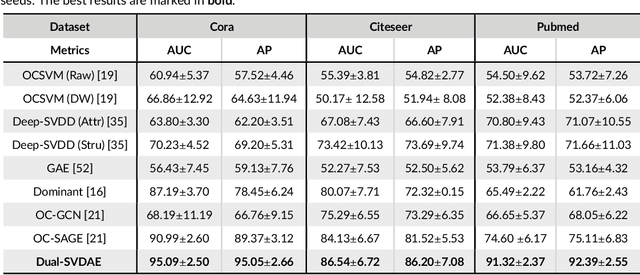
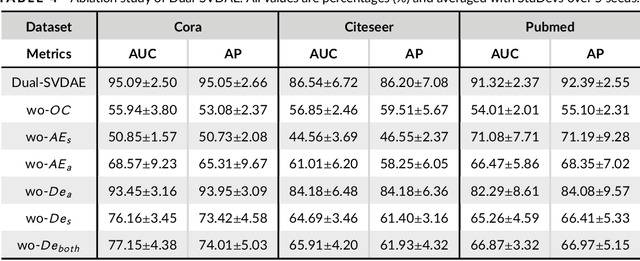
Abstract:Networks are ubiquitous in the real world such as social networks and communication networks, and anomaly detection on networks aims at finding nodes whose structural or attributed patterns deviate significantly from the majority of reference nodes. However, most of the traditional anomaly detection methods neglect the relation structure information among data points and therefore cannot effectively generalize to the graph structure data. In this paper, we propose an end-to-end model of Deep Dual Support Vector Data description based Autoencoder (Dual-SVDAE) for anomaly detection on attributed networks, which considers both the structure and attribute for attributed networks. Specifically, Dual-SVDAE consists of a structure autoencoder and an attribute autoencoder to learn the latent representation of the node in the structure space and attribute space respectively. Then, a dual-hypersphere learning mechanism is imposed on them to learn two hyperspheres of normal nodes from the structure and attribute perspectives respectively. Moreover, to achieve joint learning between the structure and attribute of the network, we fuse the structure embedding and attribute embedding as the final input of the feature decoder to generate the node attribute. Finally, abnormal nodes can be detected by measuring the distance of nodes to the learned center of each hypersphere in the latent structure space and attribute space respectively. Extensive experiments on the real-world attributed networks show that Dual-SVDAE consistently outperforms the state-of-the-arts, which demonstrates the effectiveness of the proposed method.
Self-Supervised Time Series Representation Learning by Inter-Intra Relational Reasoning
Nov 27, 2020
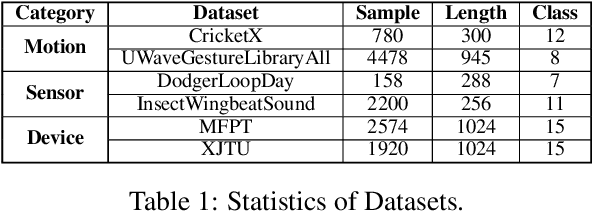
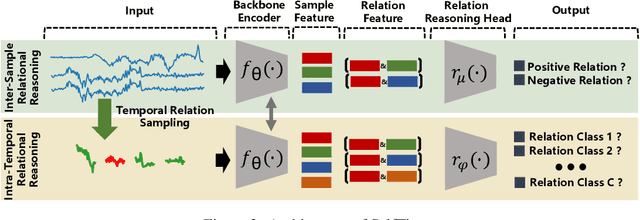

Abstract:Self-supervised learning achieves superior performance in many domains by extracting useful representations from the unlabeled data. However, most of traditional self-supervised methods mainly focus on exploring the inter-sample structure while less efforts have been concentrated on the underlying intra-temporal structure, which is important for time series data. In this paper, we present SelfTime: a general self-supervised time series representation learning framework, by exploring the inter-sample relation and intra-temporal relation of time series to learn the underlying structure feature on the unlabeled time series. Specifically, we first generate the inter-sample relation by sampling positive and negative samples of a given anchor sample, and intra-temporal relation by sampling time pieces from this anchor. Then, based on the sampled relation, a shared feature extraction backbone combined with two separate relation reasoning heads are employed to quantify the relationships of the sample pairs for inter-sample relation reasoning, and the relationships of the time piece pairs for intra-temporal relation reasoning, respectively. Finally, the useful representations of time series are extracted from the backbone under the supervision of relation reasoning heads. Experimental results on multiple real-world time series datasets for time series classification task demonstrate the effectiveness of the proposed method. Code and data are publicly available at https://haoyfan.github.io/.
Correlation-aware Deep Generative Model for Unsupervised Anomaly Detection
Feb 18, 2020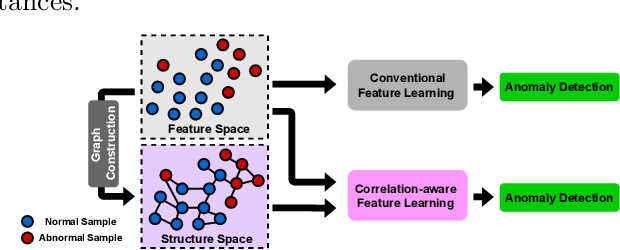

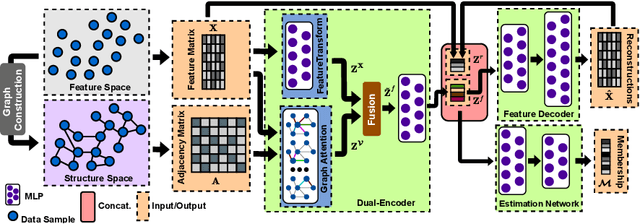
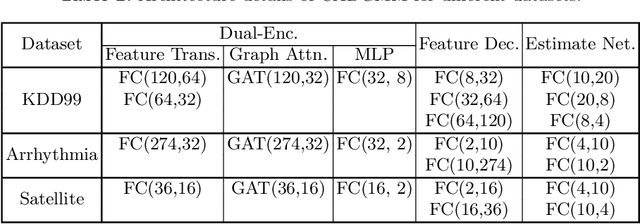
Abstract:Unsupervised anomaly detection aims to identify anomalous samples from highly complex and unstructured data, which is pervasive in both fundamental research and industrial applications. However, most existing methods neglect the complex correlation among data samples, which is important for capturing normal patterns from which the abnormal ones deviate. In this paper, we propose a method of Correlation aware unsupervised Anomaly detection via Deep Gaussian Mixture Model (CADGMM), which captures the complex correlation among data points for high-quality low-dimensional representation learning. Specifically, the relations among data samples are correlated firstly in forms of a graph structure, in which, the node denotes the sample and the edge denotes the correlation between two samples from the feature space. Then, a dual-encoder that consists of a graph encoder and a feature encoder, is employed to encode both the feature and correlation information of samples into the low-dimensional latent space jointly, followed by a decoder for data reconstruction. Finally, a separate estimation network as a Gaussian Mixture Model is utilized to estimate the density of the learned latent vector, and the anomalies can be detected by measuring the energy of the samples. Extensive experiments on real-world datasets demonstrate the effectiveness of the proposed method.
AnomalyDAE: Dual autoencoder for anomaly detection on attributed networks
Feb 12, 2020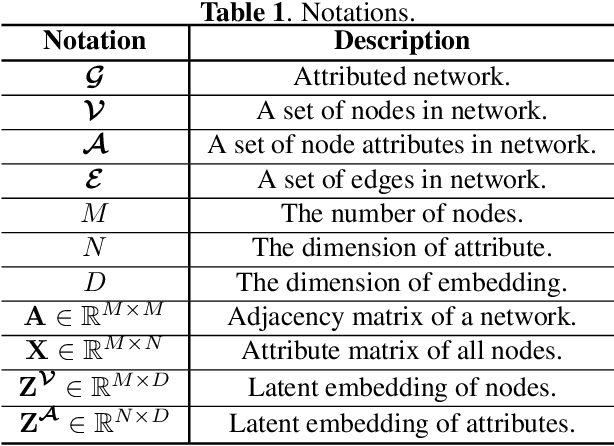
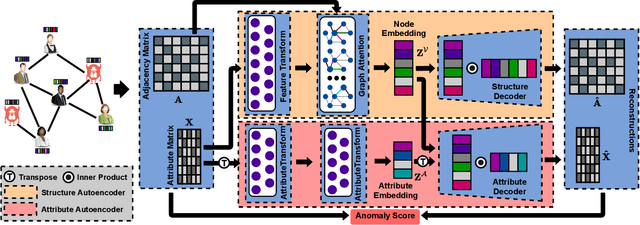

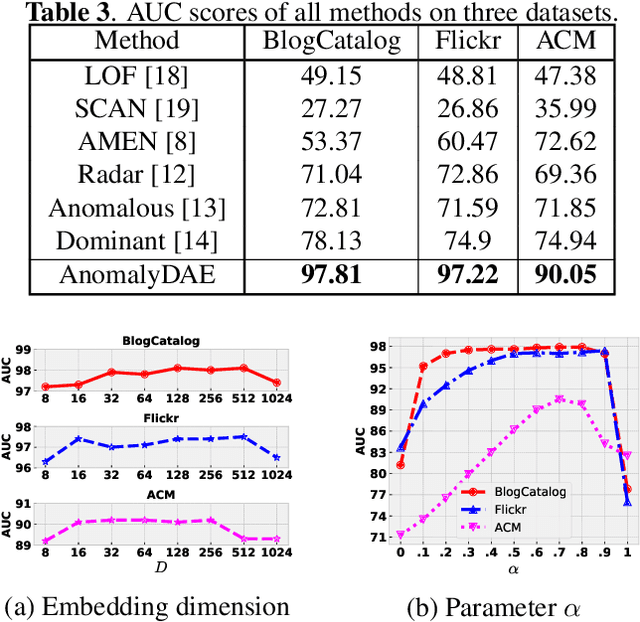
Abstract:Anomaly detection on attributed networks aims at finding nodes whose patterns deviate significantly from the majority of reference nodes, which is pervasive in many applications such as network intrusion detection and social spammer detection. However, most existing methods neglect the complex cross-modality interactions between network structure and node attribute. In this paper, we propose a deep joint representation learning framework for anomaly detection through a dual autoencoder (AnomalyDAE), which captures the complex interactions between network structure and node attribute for high-quality embeddings. Specifically, AnomalyDAE consists of a structure autoencoder and an attribute autoencoder to learn both node embedding and attribute embedding jointly in latent space. Moreover, attention mechanism is employed in structure encoder to learn the importance between a node and its neighbors for an effective capturing of structure pattern, which is important to anomaly detection. Besides, by taking both the node embedding and attribute embedding as inputs of attribute decoder, the cross-modality interactions between network structure and node attribute are learned during the reconstruction of node attribute. Finally, anomalies can be detected by measuring the reconstruction errors of nodes from both the structure and attribute perspectives. Extensive experiments on real-world datasets demonstrate the effectiveness of the proposed method.
 Add to Chrome
Add to Chrome Add to Firefox
Add to Firefox Add to Edge
Add to Edge